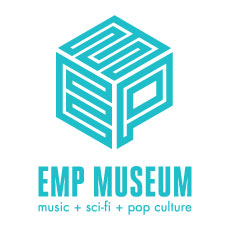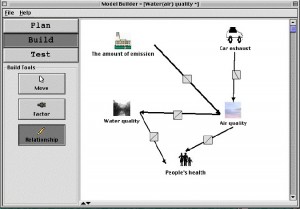I am disappointed with the quality of the educational apps available for iOS (iPad, iPod and iPhone), because the vast majority on iTunes are rote learning tools. There are also many informational apps (apps that allow information retrieval) but few truly interactive apps which students could become embedded and embodied with.
I downloaded and tested the free app Molecules for iOS (4.0 or higher) from Sunset Lakes Software , ![]() which renders and allows users to view and manipulate three dimensional models of molecules. There are a number of included molecules, including a strand of DNA, Insulin and Caffeine, but there are thousands of molecules available for free download from PubChem and the Protein Data Bank. I viewed the DNA strand, Caffeine and downloaded and viewed Trichloroacetic Acid. Each rendering took only moments, and rotating and manipulating the molecule on the iPod screen was simple and seamless. These models are much better than a static image because by rotating the models on the screen, students can identify patterns and differences and can see the model from different perspectives to view troublesome or masked portions of the model. I was interested in this App from a biology perspective (because of the complex molecules involved in biological systems), but see where it would be useful in junior sciences as well as chemistry and biology
which renders and allows users to view and manipulate three dimensional models of molecules. There are a number of included molecules, including a strand of DNA, Insulin and Caffeine, but there are thousands of molecules available for free download from PubChem and the Protein Data Bank. I viewed the DNA strand, Caffeine and downloaded and viewed Trichloroacetic Acid. Each rendering took only moments, and rotating and manipulating the molecule on the iPod screen was simple and seamless. These models are much better than a static image because by rotating the models on the screen, students can identify patterns and differences and can see the model from different perspectives to view troublesome or masked portions of the model. I was interested in this App from a biology perspective (because of the complex molecules involved in biological systems), but see where it would be useful in junior sciences as well as chemistry and biology
As a relatively specialized and limited use tool, Molecules surprisingly contains Winn’s (2002) notions of embeddedness, embodiment and adaptation. Student’s embodiment come about from the motions required to manipulate the 3-D model. Embeddedness comes about from the ability to interact with the molecular models, albeit in a minor fashion. Adaptation is similar to t-GEM’s (Khan, 2007) modifying, where student understanding is adapted to fit the sensory information they are subjected to. Molecules affords this by providing the vehicle for students to observe molecules from different perspectives.
Rochelle (2003) points out that handheld devices cause little change in the social practices of education, meaning that the teacher is still needed to scaffold the learning, and that learning still happens primarily through student-student and student-teacher interactions. Molecules does little to refute this claim. The teacher is still required to aid students in downloading and interpreting models and preventing misconceptions (like atoms of specific elements being specific colors). Student discussions are still important in forming understanding and co-construction of knowledge.
I would modify this app by adding a user construction component, where users could create their own molecules, and then share them with their classmates. This would add collaboration and user creation of content to the app, making it more well rounded and extensible, and make it appealing to junior science teachers who need tools to aid students’ learning in areas of chemical naming, formulas and bonding. The changes would facilitate mobile learning by making the app less specialized and of greater use to the student population as a whole.
References
Khan, S. (2007). Model-based inquiries in chemistry. Science Education, 91(6), 877-905.
Roschelle, J. (2003). Unlocking the learning value of wireless mobile devices. Journal of Computer Assisted Learning, 19(3), pp. 260-272.
Winn, W. (2003). Learning in artificial environments: Embodiment, embeddedness, and dynamic adaptation. Technology, Instruction, Cognition and Learning, 1(1), 87-114



